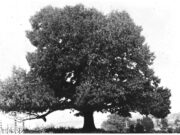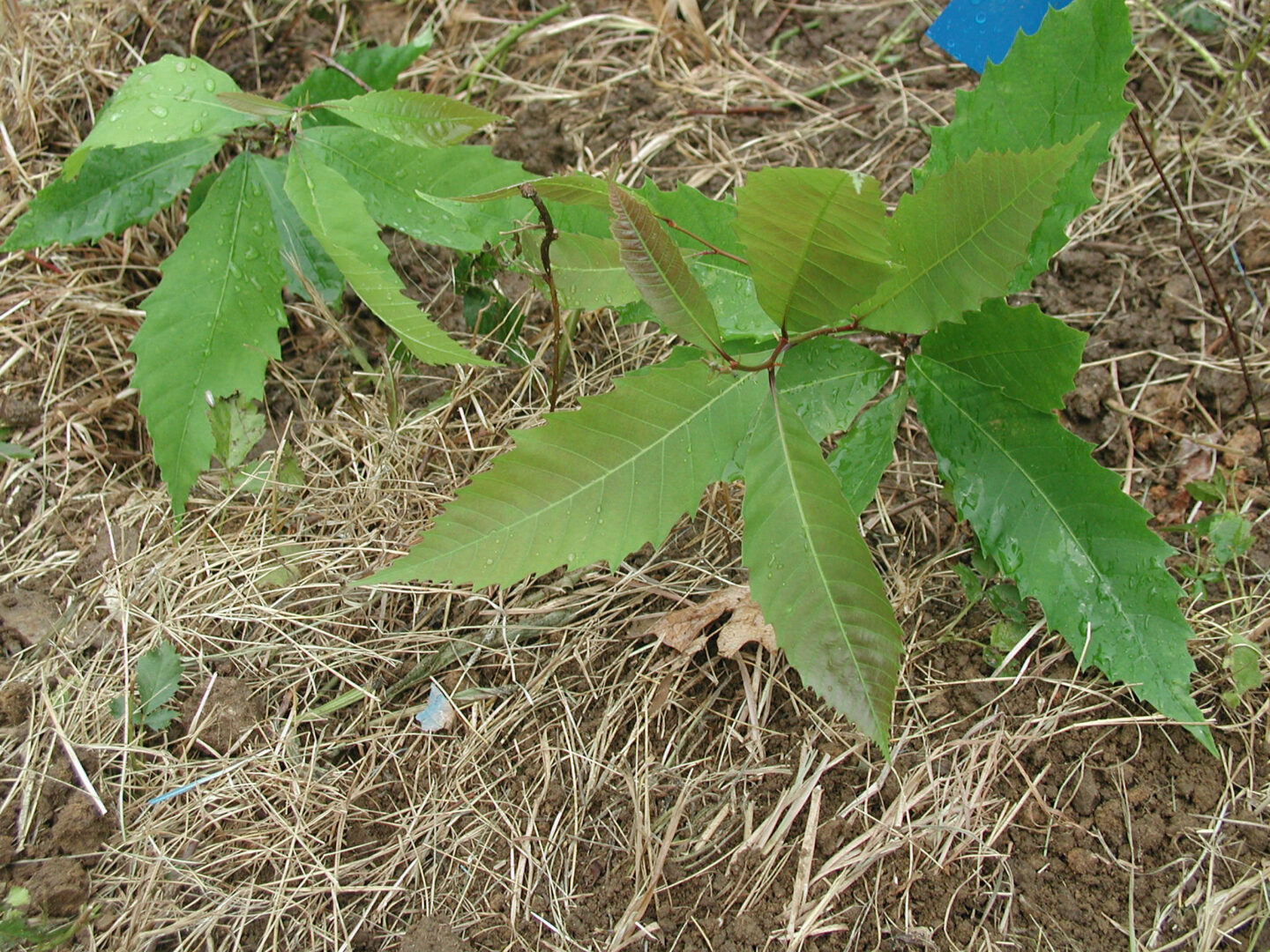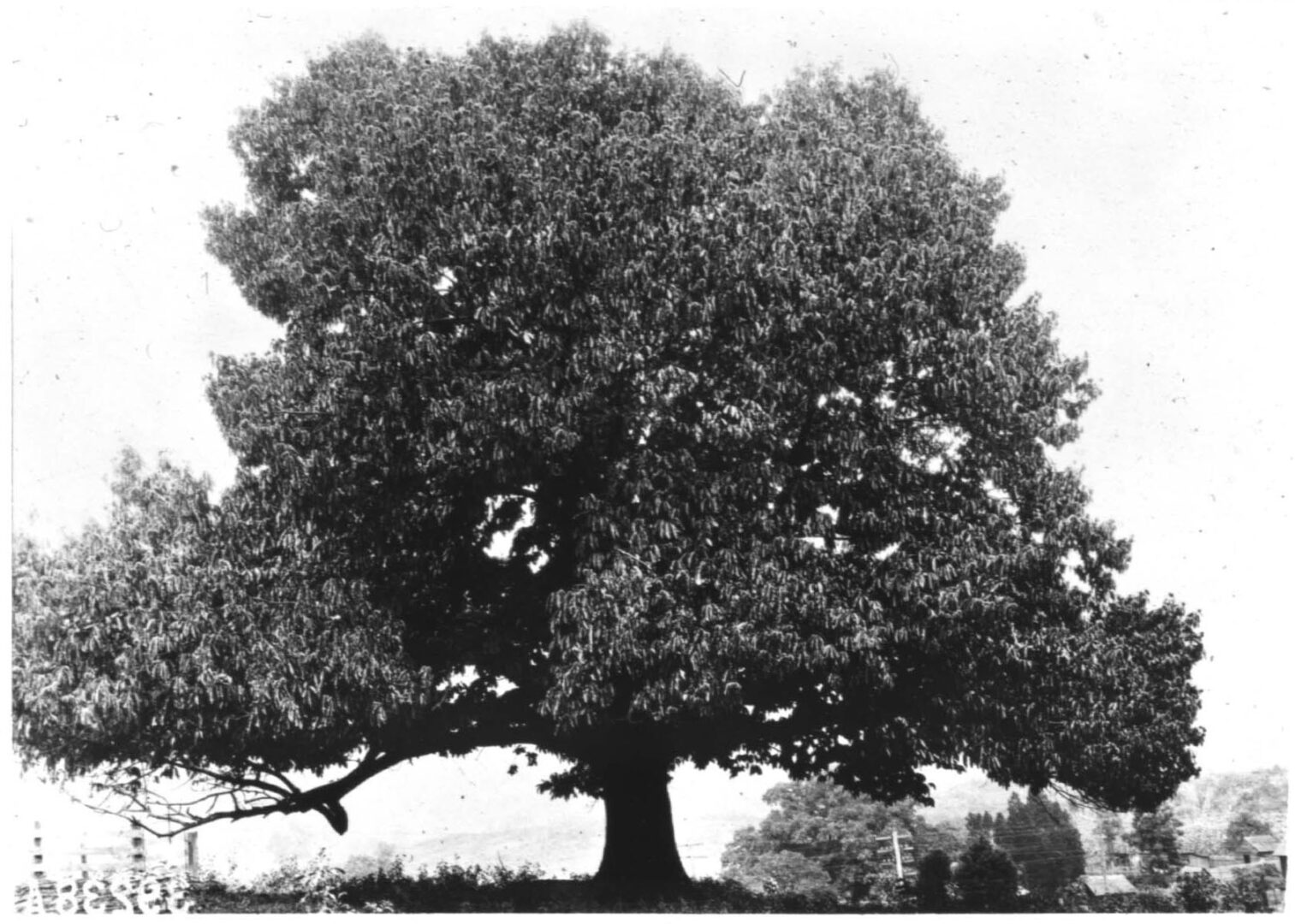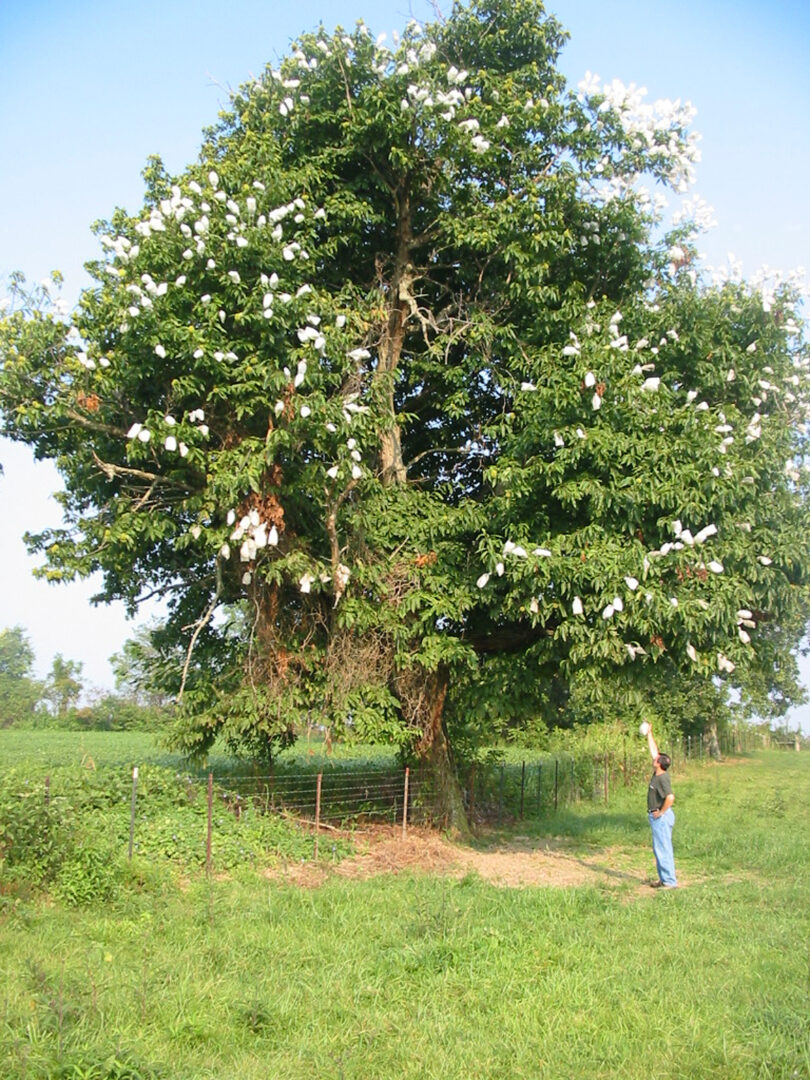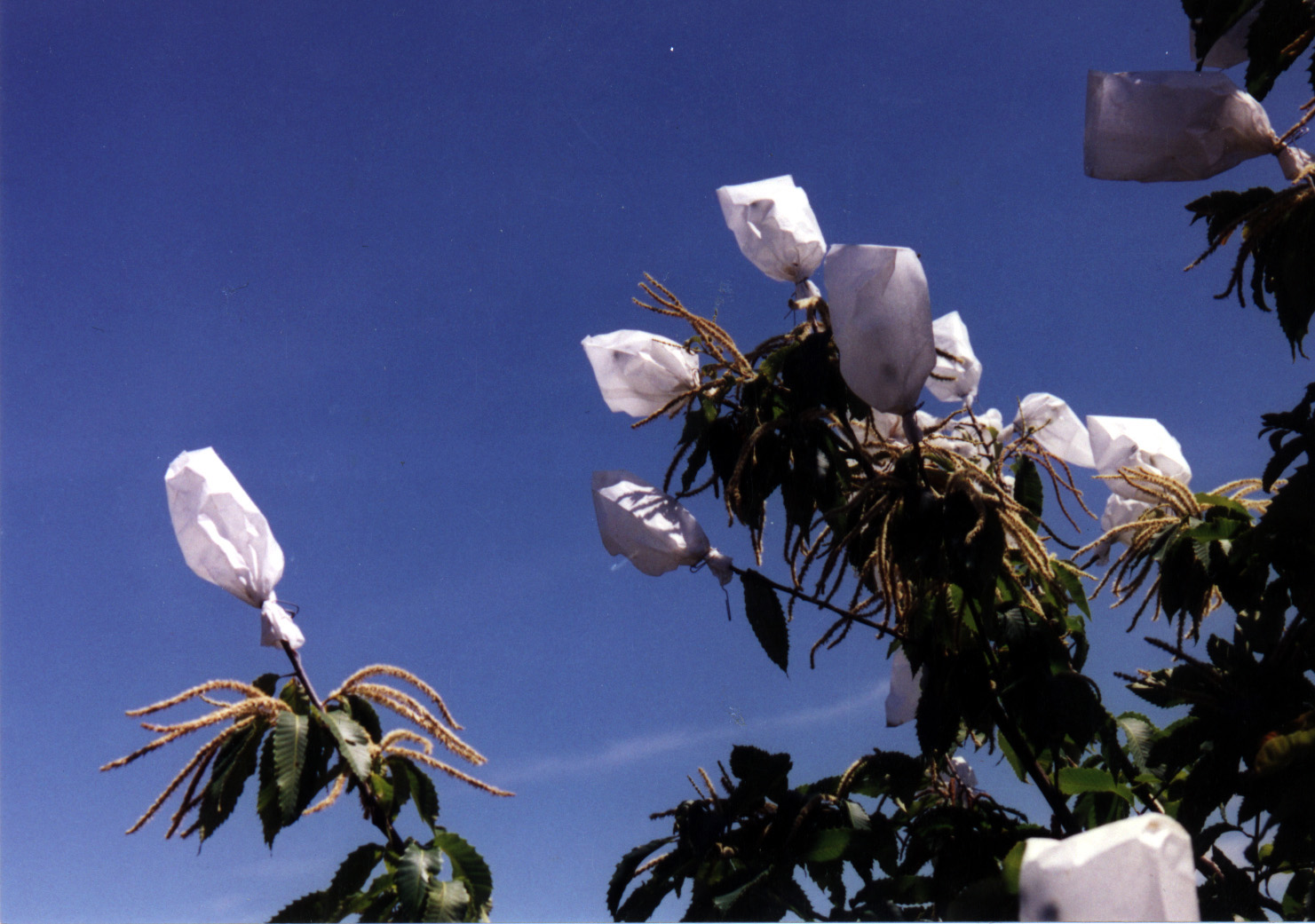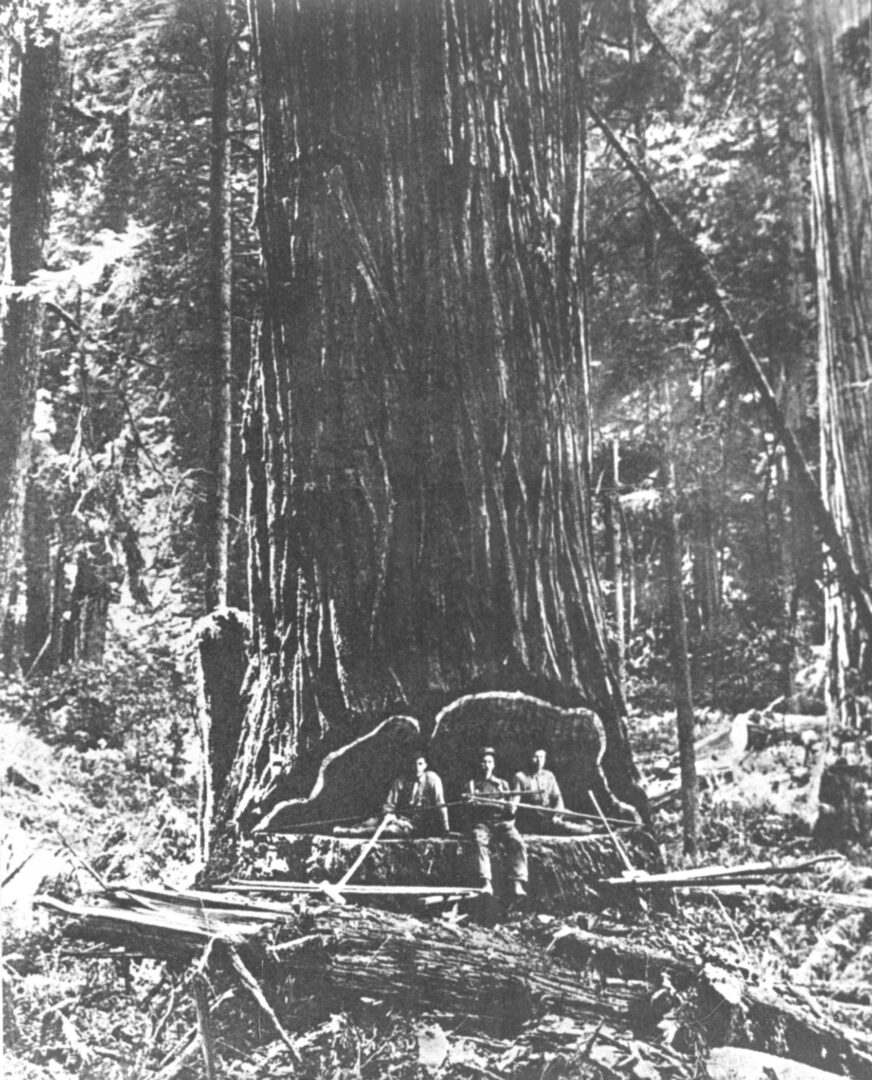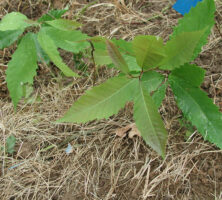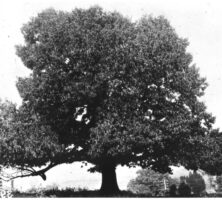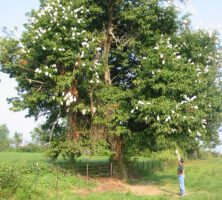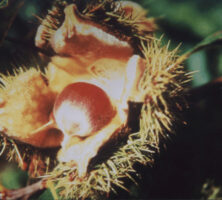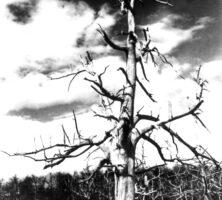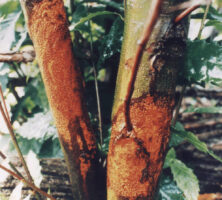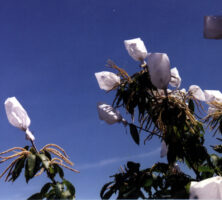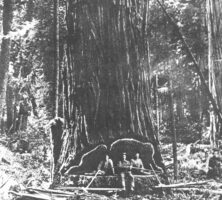Until the beginning of the twentieth century, the American chestnut (Castanea dentata [Marshall] Borkh) was one of the most prevalent and valuable trees in the eastern forests of the United States. The chestnut blight fungus (Cryphonectria parasitica), accidentally introduced around 1900, killed most of the mature trees in the natural range of the species, and today the species exists mainly as an understory shrub. Efforts currently underway in Georgia and other states, however, may eventually result in the restoration of American chestnut to eastern forests.
Importance of the Tree
Before 1900 American chestnut was said to have composed up to one-quarter of the standing trees of the Appalachian forest, including the north Georgia mountains, and in Georgia its range also extended into the upper Piedmont. The trees were especially dominant on higher mountain ridges and flats. They grew very rapidly to heights of up to 100 feet, with trunks more than 6 feet in diameter. Chestnut was more useful than any hardwood in America, providing timber for houses, barns, and fences; tannin for the leather industry; and nuts for people and wildlife. The wood was straight-grained and easy to split and work with hand tools. The heartwood of mature trees was very high in tannin content, which made the wood so decay-resistant that chestnut timbers in structures built more than a hundred years ago are still as sound now as they were when the structures were erected. Abundant nut crops were produced almost every year and provided a major source of food for wild turkey, deer, bear, and smaller mammals. Those who have tasted American chestnuts say that they are sweeter than their Asian and European counterparts.
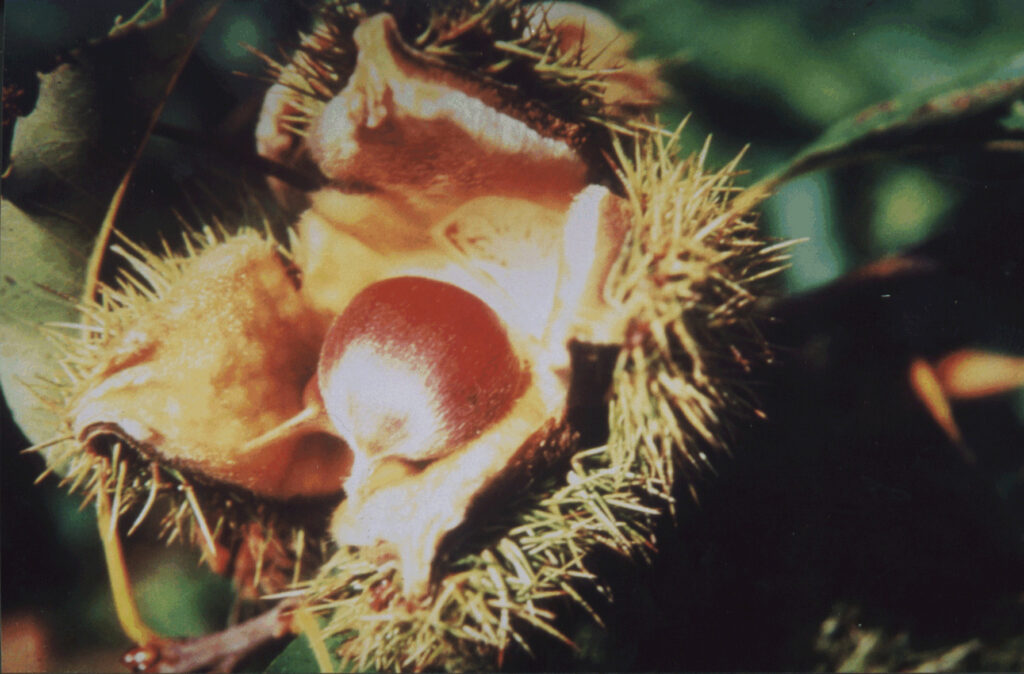
Courtesy of The American Chestnut Foundation
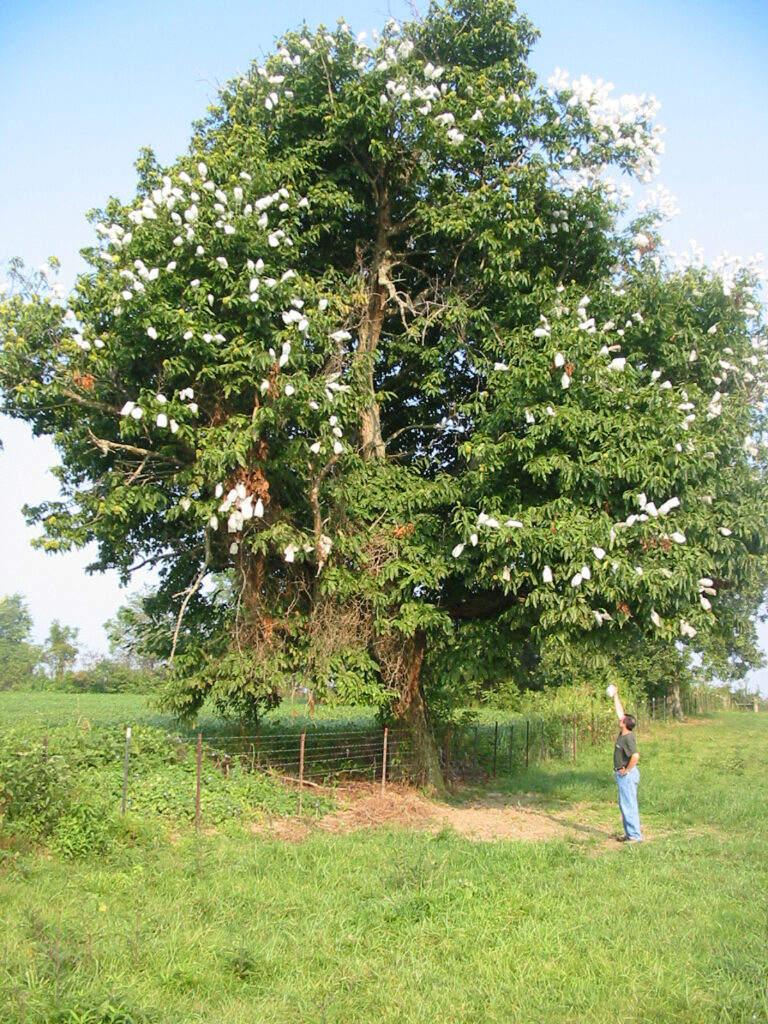
Courtesy of The American Chestnut Foundation
The Blight
The first documentation of chestnut blight in North America was in 1904, when a forester noticed that the American chestnut trees growing at the Bronx Zoo in New York City were dying. A fungus, designated at the time as Endothia parasitica but since reclassified as C. parasitica, was soon identified as the cause of the disease. It is now generally agreed that the fungus entered the United States on Japanese chestnut stock imported as orchard trees in the late 1800s. Since Chinese and Japanese chestnut trees coevolved with the blight fungus, they are much more resistant to it than the American chestnut is. The fungus produces two kinds of spores, one of which is spread by wind and the other by rain, insects, and birds. These spores spread the infection south from New York at the rate of about 200 miles every ten years, wiping out almost every mature chestnut tree in the natural range of the species.
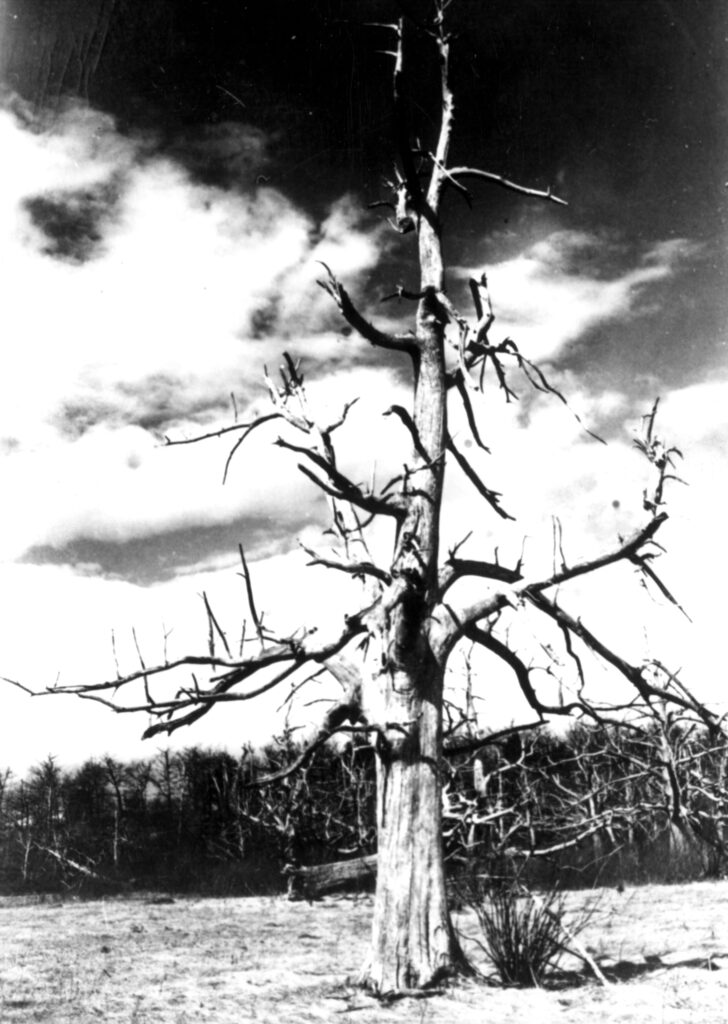
Courtesy of The American Chestnut Foundation
The blight reached Georgia in the 1940s. Wounds in the bark allow fungal mycelia from germinated spores to penetrate living cells quickly. The mycelia fan out within the inner bark of the tree, killing the food-conducting tissue (phloem) and the layer of dividing cells (cambium) that gives rise to the phloem and the water-conducting cells (xylem), and forming a characteristic canker on the stem. When the phloem tissues die in a complete ring around the stem (girdling), the tree can no longer transport water to its leaves and rapidly dies. American chestnut can still be found in eastern forests today, because it continues to resprout from surviving root systems in the soil. However, the tree rarely reaches thirty feet or produces nuts before it is attacked and killed by the fungus, which also infects the Allegheny chinkapin (Castanea pumila) and some species of oaks.
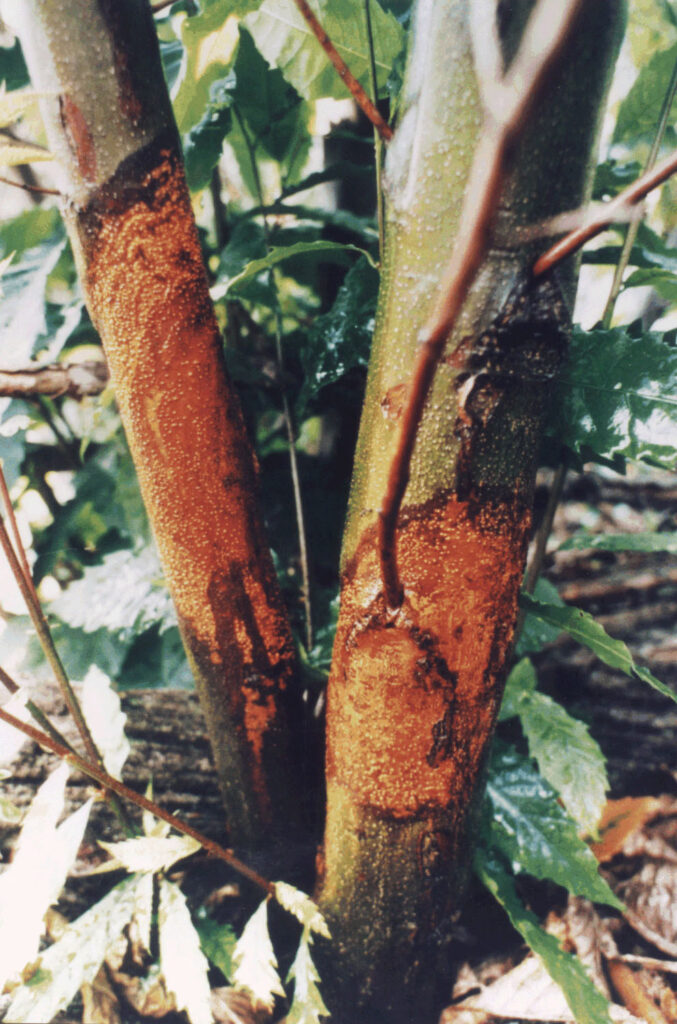
Courtesy of The American Chestnut Foundation
Recovery Efforts
A number of approaches for combating the disease have been attempted, including (1) searching for naturally occurring heritable resistance in American chestnut, (2) breeding American chestnut trees with resistant Chinese and Japanese species to generate resistant hybrids, (3) irradiating seeds with gamma rays in the hope of producing blight-resistant mutants, (4) investigating hypovirulent strains of the fungus (that is, strains infected by a virus that debilitates the fungus and lowers its virulence), and (5) developing a system for engineering American chestnut with genes that might confer blight resistance. Some of these approaches appear promising.
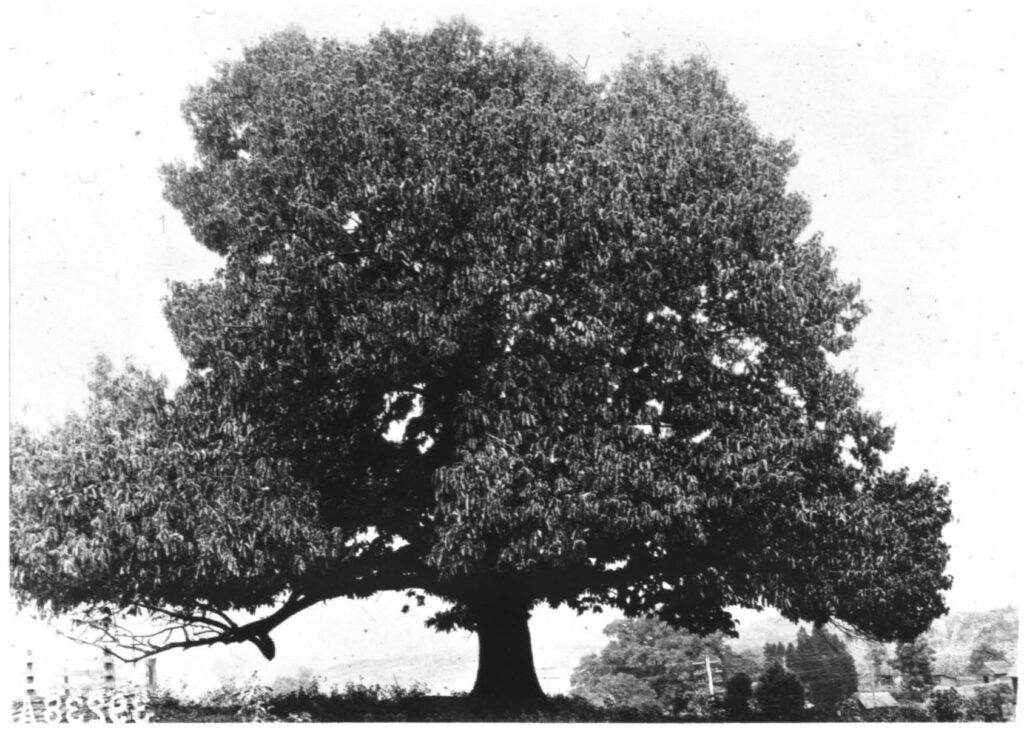
Courtesy of The American Chestnut Foundation
The American Chestnut Foundation’s backcross breeding program has produced trees carrying blight-resistance genes from Chinese chestnut but with a growth habit close to that of their American chestnut parents, which supply 15/16 of their genome. Scientists at the University of Maryland are testing an approach that may lead to more rapid spread of the virus responsible for hypovirulence in the fungus: they have inserted a DNA copy of the viral RNA into the fungus, allowing the virus to spread sexually.
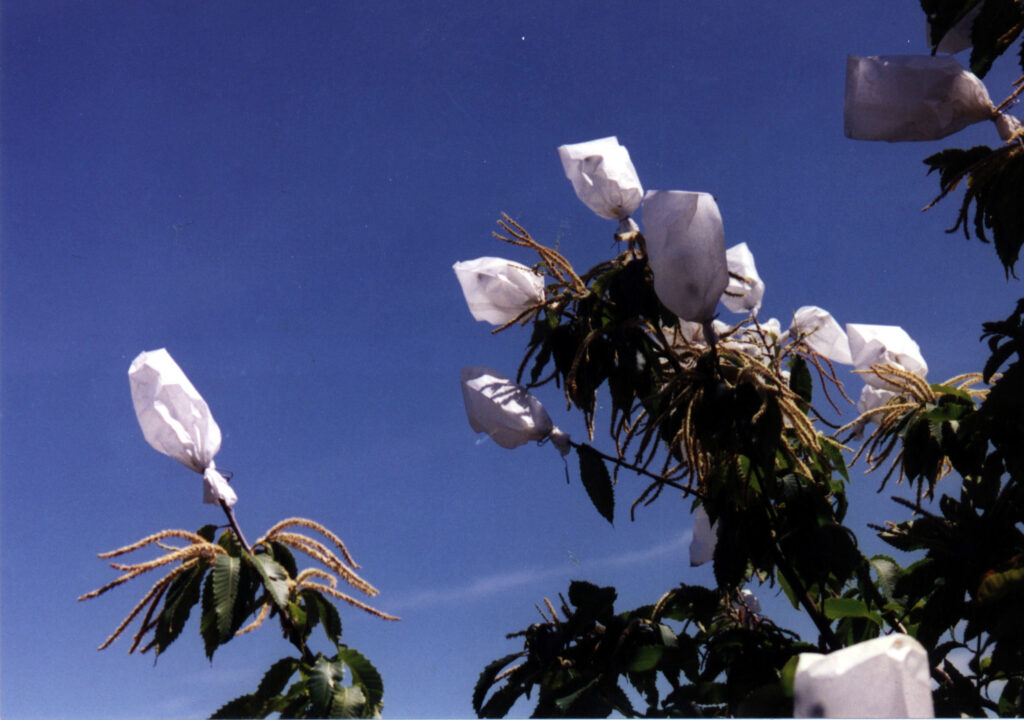
Courtesy of American Chestnut Foundation
Scientists at the University of Georgia and at the State University of New York have produced tissue cultures of American chestnut that are capable of producing thousands of structures called somatic embryos. These structures, which resemble seed embryos, can be germinated to produce seedlinglike plants. The embryogenic cultures are being tested as target material for inserting potential blight-resistance genes into American chestnut through genetic engineering. Marker genes have already been inserted into chestnut cells by microprojectile bombardment and by Agrobacterium-mediated transformation. Once the ability to produce genetically engineered American chestnut trees has been demonstrated, genes that have been shown to confer resistance to disease-causing fungi in other plant species can be tested in American chestnut.
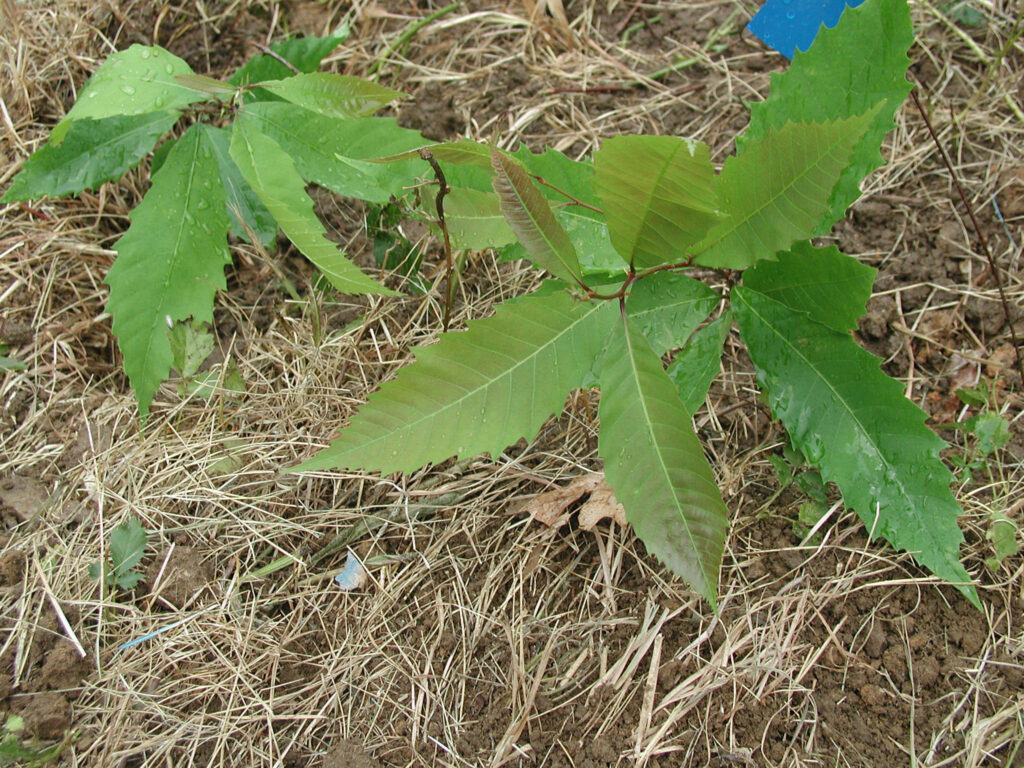
Courtesy of The American Chestnut Foundation
In 2006 a stand of American chestnut trees, estimated to be between twenty and thirty years old, was discovered in Pine Mountain near Warm Springs. Composed of six forty-foot-tall trees, the stand is the southernmost representative of the species able to produce flowers and nuts. Pollen from the trees is expected to help scientists produce a breed resistant to the chestnut blight fungus.


